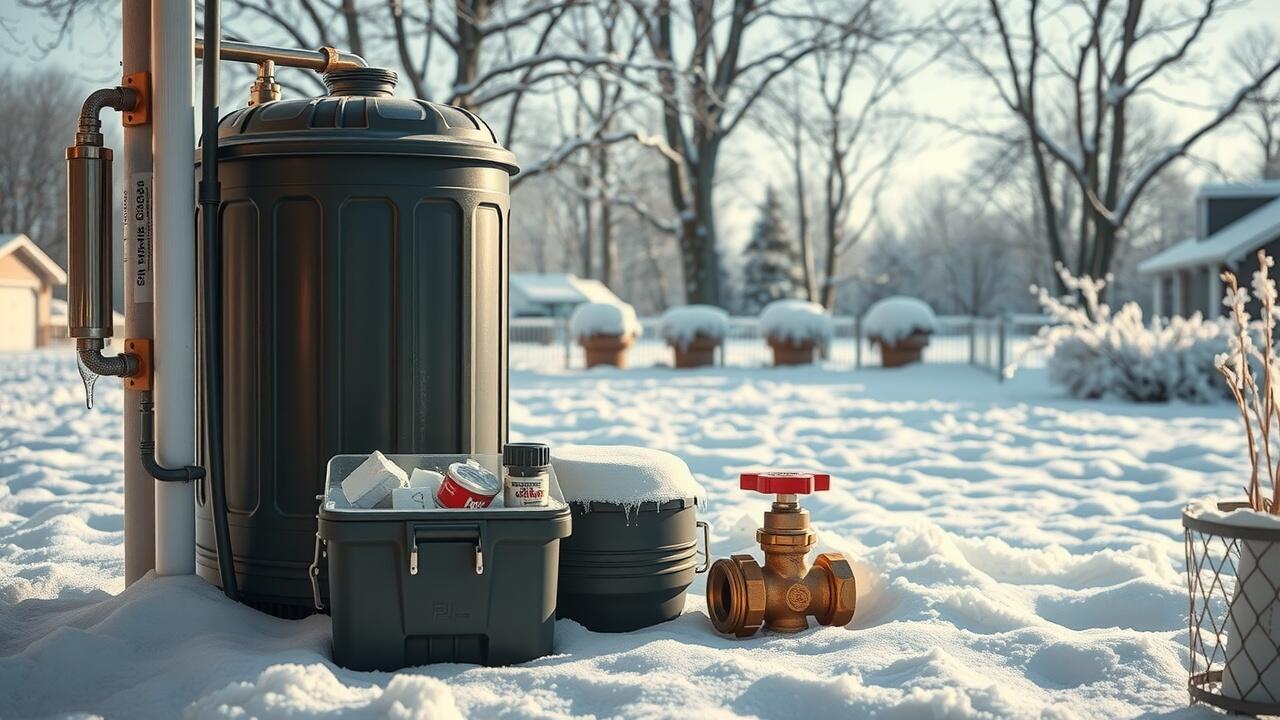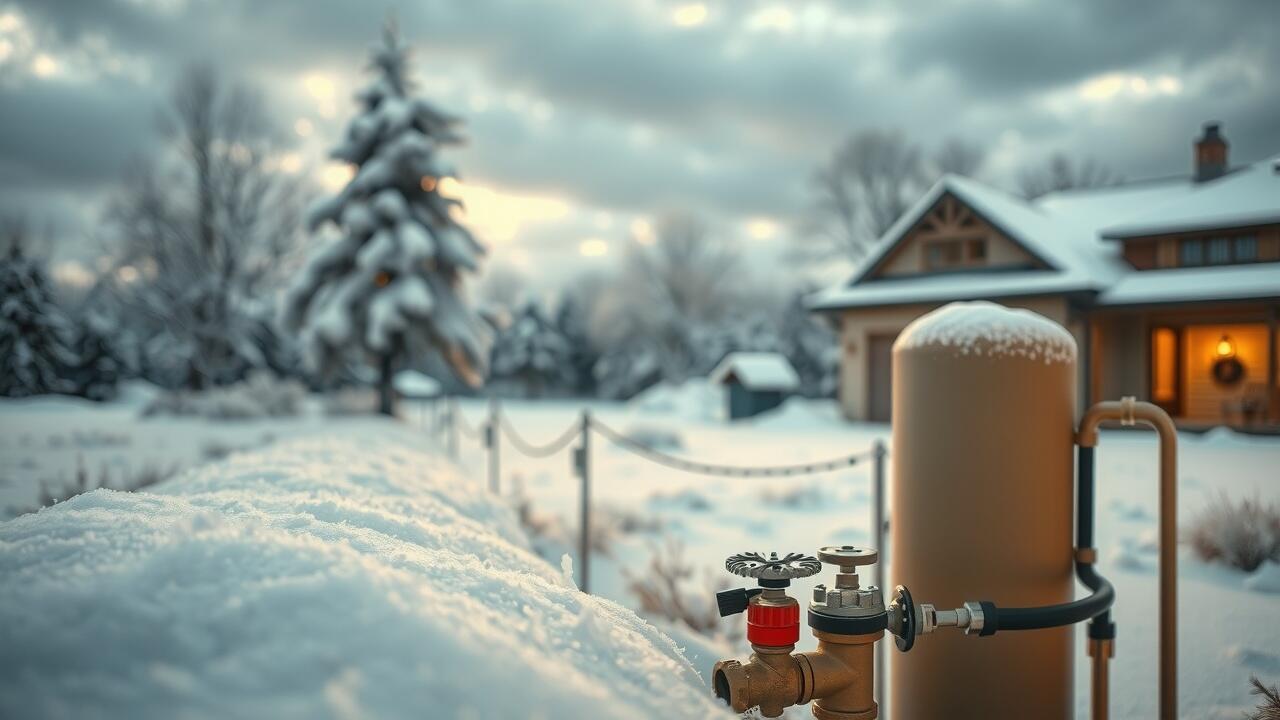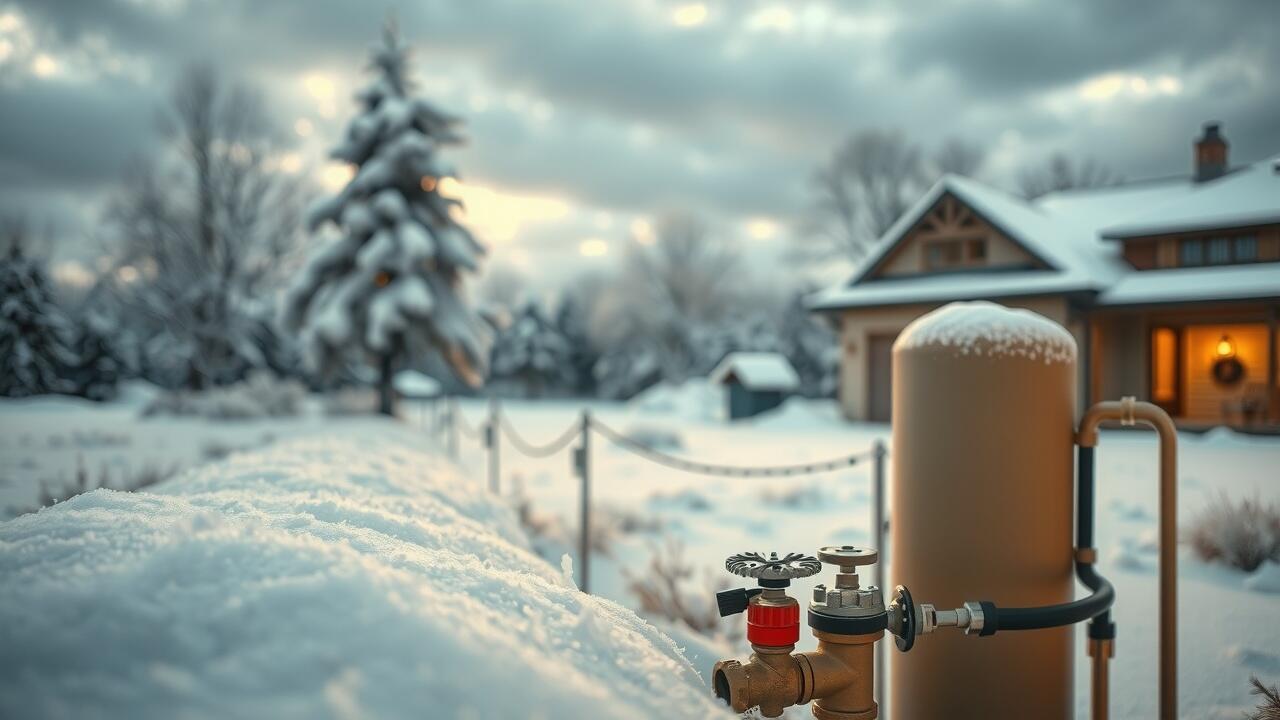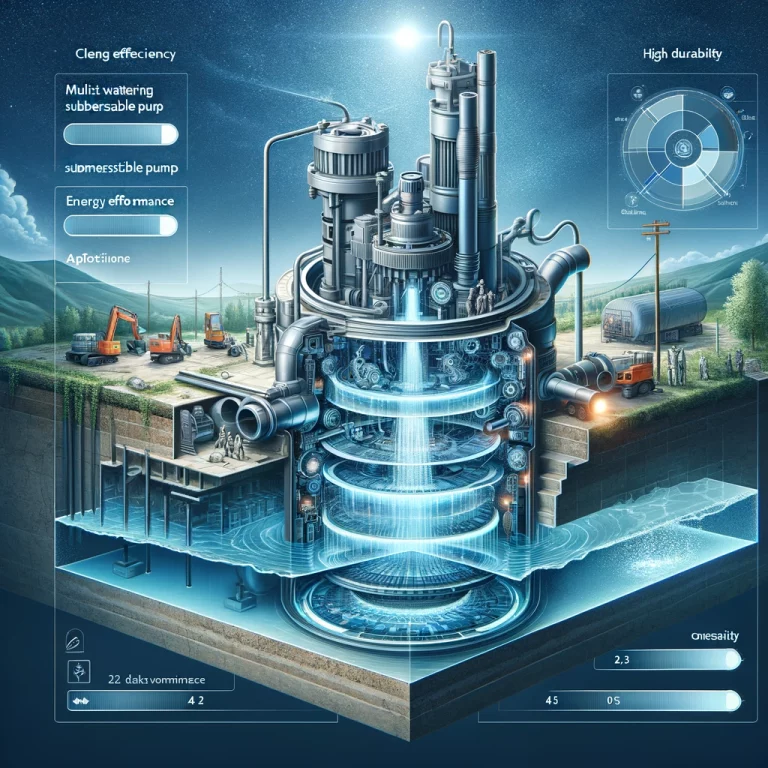Essential Tips to Winterize Your Water Treatment System
Key Takeaways
- Significance of preparing your water purification system for cold weather
- Actions to take for preparing your water purification system for winter
- Methods for preparing your water filtration system for winter
- Frequent errors to steer clear of during the winterization process
- Indicators that your water purification system requires prompt care
Importance of Winterizing Your Water Treatment System
Properly winterizing your water treatment system is essential for protecting your investment in maintaining clean and safe drinking water. The harsh winter months can lead to significant challenges, such as water damage from freezing pipes or compromised water quality due to untreated hard water. A well-maintained water filtration system ensures the production of soft water, essential for daily use and comfort. Failing to winterize your water treatment system can result in costly repairs or the need for replacements. By taking proactive measures, homeowners can prevent issues related to water softening and ensure their water filters function efficiently throughout the cold season.

Protecting Your Investment
Investing in a robust water treatment system is a commitment to maintaining a reliable water supply throughout the year. To protect this investment, it is crucial to winterize your water treatment system before the cold sets in. Freezing temperatures can lead to ice formation in pipes and tanks, which may result in flooded areas or broken components. A properly winterized system, including your water softener and water tank, ensures that the water pressure remains stable and that your hot water sources function as intended.
Failing to winterize your water treatment system may lead to costly repairs or replacements, particularly if saline water infiltration occurs due to damaged pipes. Taking proactive steps to insulate key components, such as the ice maker and water softener, minimizes risks associated with freezing conditions. Maintaining the integrity of your water supply during winter months not only protects your investment but also ensures a steady and clean flow of water when needed.
Ensuring Clean Water Supply
Properly winterizing your water treatment system is crucial for maintaining a clean water supply during the colder months. Ice crystals can form when temperatures drop, leading to the freezing of water molecules within the system. This freezing can result in significant damage, causing flooding in areas such as bathtubs and showers. A well-prepared system ensures that essential components, like ice makers and hot water tanks, function efficiently, providing the necessary convenience throughout winter.
Failure to winterize your water treatment system can compromise drinking water quality and usability. A saline solution could become less effective in treating water if freezing damages the system’s components. Regular maintenance and preparation before winter lead to smooth operation, allowing for the washing and daily use of water without interruptions. Taking these precautions helps you maintain a reliable water supply, safeguarding your household and ensuring comfort during the chilly season.
Steps to Winterize Your Water Treatment System
Winterizing your water treatment system is crucial for protecting it from the harsh effects of cold climates. Fluctuating temperatures can lead to freezing water droplets, which may cause significant damage or even a flood if not properly managed. Begin by draining the system thoroughly, ensuring that all areas, including the brine tank and plumbing lines, are empty to prevent ice formation. Implementing ultraviolet disinfection (UV) can help maintain water quality before and during winter, especially in areas with fluctuating weather patterns. Prepare for the colder months by carefully following these steps to effectively winterize your water treatment system, ensuring it operates efficiently throughout the season.
| Step | Description | Tools Needed |
|---|---|---|
| Drain System | Thoroughly drain all components, including tanks and pipes, to prevent freezing. | Wrench, hose, bucket |
| Inspect Components | Check for any signs of wear or damage in pipes and tanks that may worsen in cold. | Flashlight, inspection mirror |
| Implement UV Disinfection | Install or activate UV disinfection systems to maintain water quality. | UV light system |
| Insulate Pipes | Wrap pipes with insulation material to protect against freezing temperatures. | Pipe insulation, tape |
| Seal Leaks | Check for gaps and seal any leaks in the system to maintain efficiency. | Sealant, caulk |
Recommended Preparation Timeline
A thorough timeline is essential to effectively winterize your water treatment system. Starting preparations at least a month before the first frost will help ensure that all necessary steps are addressed. This timeline should include scheduling maintenance checks for your plumbing and water treatment equipment. Early actions can help prevent issues like frozen water damage, which could compromise your entire system. By allocating sufficient time, you can also focus on the specific requirements for water softener winterization and winterizing water filtration to enhance the longevity of your system.
During the weeks leading up to winter, prioritize indoor water treatment tasks. Inspect all components of your water system and ensure that proper insulation is in place to protect pipes from extreme cold. Planning for winter water softener adjustments is also crucial, as these changes can directly impact performance. Aim to complete the winterization phase two weeks before the anticipated onset of freezing temperatures, giving you ample time to address any unexpected issues and confirming that your water treatment system is fully prepared for the winter months.
Essential Tools and Supplies
Proper winterization of your water treatment system requires a selection of essential tools and supplies. A comprehensive toolkit may include wrenches, screwdrivers, and pliers to facilitate the disassembly of components. A quality hose may be necessary for draining the tank to prevent water from freezing, especially in the cold water line. Ensuring you have drain plugs and caps will help seal your system after water has been expelled. Collecting these tools ahead of time allows for a streamlined process when preparing to winterize your water treatment system.
Preventative winter care also involves gathering supplies to maintain your drinking water system in good condition. Non-toxic antifreeze can be a crucial addition if you have a frozen water softener in your system, protecting components from harsh winter conditions. Inspect and replace any worn seals or hoses ahead of winterizing to avoid leaks. Having proper winterization supplies ready ensures that every aspect of your water systems is accounted for, contributing to a reliable and efficient operation throughout the cold months.
How to Winterize Your Water Filtration System
Preparing to winterize your water treatment system is essential for protecting your investment in quality water. Proper winterization requirements include thorough attention to draining the system, especially for water filtration equipment and water softener systems, which can suffer from damage if left unattended during harsh winter weather. Ultraviolet disinfection winterizing plays a crucial role in maintaining the effectiveness of your water filter system, ensuring that it functions efficiently even after the cold season. Failing to take winterizing precautions can lead to significant issues and compromise the quality of your water. Regular maintenance and understanding the specific needs of your water softener installations can help prevent drastic problems and extend the lifespan of your water filtration system.

Draining the System Properly
Properly draining your water treatment system is vital for effective winterization. Begin by ensuring all water drain lines are clear and open, allowing residual water to flow freely. This step is crucial for preventing freeze damage. Pay special attention to outdoor water softeners, as these units can face unique winter challenges. Check the water softener status and empty the tank to eliminate any remaining saline water solution. A thorough inspection ensures that treatment equipment, such as filtration systems and tanks, is completely void of water to prevent freezing.
After clearing the main components, ensure that any water drip from faucets or fixtures is accounted for to avoid ice formation. Safely store any seasonal items, like an old ice chest, away from treatment equipment. This thoughtful approach guarantees your systems remain in top condition during winter months. Ensuring a comprehensive draining process not only protects your water filter systems but also simplifies water softener maintenance and prepares your treatment systems for the colder season.
Cleaning and Maintenance Before Winter
Preparing your home for winter involves ensuring your entire water filter operates smoothly. Before you winterize your water treatment system, carry out a thorough cleaning of your home water filter. Hard water states can contribute to mineral buildup, which affects filtration efficiency. Addressing any clogs or buildup will reduce the chances of frozen pipes and unpurified water during frigid temperatures. Brands like Aquarius Water Conditioning offer guidance on maintaining your water softener year-round, helping you avoid cold weather damages.
Regular maintenance also includes checking the functionality of your water softener. Confirm that your system is functioning correctly to avoid complications when temperatures drop. If you use lake water, it is crucial to prepare your water filtration system appropriately to prevent contamination and other issues. Seek advice from professionals in the water filtration industry on best practices to winterize your water treatment system effectively, ensuring safe drinking water throughout the cold months.
Common Mistakes to Avoid
Failing to winterize your water treatment system can lead to significant problems as winter approaches. One common mistake is ignoring the insulation needs of water softener surfaces, which can cause damage during freezing temperatures. Many homeowners overlook the importance of checking water softener filters, leading to inadequate treatment and compromising the quality of drinking water. During the winter months, neglecting to perform regular check-ups may result in unexpected issues, impacting the efficiency of your home water softener. Consulting a Culligan water expert can help ensure that your system is properly prepared, preventing issues such as utilizing free cabin water or relying on water bottles in emergencies. Taking these precautions is essential for a smooth wintertime experience.
Overlooking Insulation Needs
Proper insulation is critical to effectively winterize your water treatment system. Failing to insulate water connections can lead to frozen pipes, resulting in water escaping and potentially damaging your system. This risk becomes more pronounced during the colder winter months, especially if it’s your first winter with a new installation. A water test kit can help identify specific water contaminants that may exacerbate freezing issues, so it’s wise to test your water before the winter season begins.
Cold temperatures can create significant challenges for your water treatment system. If you neglect to insulate essential components, you may find yourself dealing with complications in the coldest months. Insulating your precious water filter and other connections helps maintain functionality even during extreme conditions. Regularly checking the insulation around pipes and ensuring that you drain bathtubs and other fixtures will also support your efforts to winterize your water treatment system.
- Ensure all exposed pipes are insulated with appropriate materials.
- Check the insulation around your water filter and any other critical components.
- Drain and winterize bathtubs, toilets, and outdoor faucets.
- Use heat tape or cable for extra protection on vulnerable pipes.
- Seal any drafts or gaps in your water treatment system’s housing.
- Schedule regular maintenance checks before winter to address any insulation needs.
- Keep a water test kit handy to monitor for contaminants as the temperature drops.
Neglecting Regular Check-ups
Regular check-ups are critical for maintaining your water treatment system, especially as colder weather approaches. Failing to inspect components like the water softener tank and the water filter cartridge can lead to serious issues. On cold days and during freezing temperatures, the risk of freezing damage increases significantly. Without these checks, systems can suffer from possible freezing, resulting in a flooded basement when spring arrives. A proactive approach can help avoid the costly consequences of cold ruining your setup.
Maintaining equipment like Culligan water systems is essential during the winterization process. Neglecting to winterize your water treatment system can lead to a breakdown of your hot water supply. Proper inspection and maintenance can prevent unexpected failures during cold periods. Regular evaluations, especially before winter sets in, help ensure that all components are functioning correctly and effectively prepared for the challenges of winter.
Signs Your Water Treatment System Needs Immediate Attention
Issues that arise during the cold weather months can signal the need for immediate attention to your water treatment system. If you notice unusual water quality problems, it may indicate that your unit is on the brink of failure due to extreme cold. Cold temperatures can lead to unit freezing, particularly in water softener pipes or along the water line. This risk heightens when face-freezing weather subsides, revealing potential damage that may have gone unnoticed. It is crucial to thoroughly inspect your system against your winter checklist before the cold period sets in, ensuring you have effectively winterized your water treatment system to avoid any costly repairs.
- Check for unusual tastes or odors in your water.
- Look for fluctuations in water pressure.
- Monitor for visible signs of leaks around the system.
- Inspect water quality for discoloration or cloudiness.
- Pay attention to unusual noises or sounds coming from the unit.
- Test for increased salt levels in water softeners.
- Ensure proper drainage to prevent freezing in pipes.
Unusual Water Quality Issues
Changes in water quality can signal serious issues, especially as temperatures drop. Cold air can cause water softener connections and pipes to freeze, leading to disruptions in your filter system. Pay attention to any unusual tastes or odors that may develop as cold weather sets in. The presence of sediment or discoloration indicates that drains may not be functioning properly, which can worsen during winter months.
Failure to winterize your water treatment system can exacerbate these problems. An outside shower that is not properly winterized may contribute to compromised water quality. Regular check-ups are essential to identify these issues early. Take action before the cold season creates further complications with your rinser or filtration setup.
Conclusion
Taking the time to winterize your water treatment system can save you from costly repairs and ensure the longevity of your equipment. Properly draining the system not only prevents damage from freezing temperatures but also maintains a clean and efficient operation when the warmer months return. Regular maintenance and readiness for the season are key steps as you work to winterize your water treatment system. Prioritizing these actions will help ensure a reliable water supply and protect your investment through the winter months.
FAQS
How can I ensure the quality of drinking water during the wintertime, especially when dealing with cold water supply and water softener challenges?
To ensure quality drinking water in the wintertime, it’s important to take measures to prevent your cold water supply from freezing. One effective way to do this is to drain the tank to prevent water from freezing during unattended water periods. Consulting with a professional water guy can help you address specific water softener challenges and find solutions that guarantee a sure water softener operation throughout the winter months.
What steps can I take to maintain the efficiency of my water treatment system and ensure my supply of water remains clean during winter?
To maintain the efficiency of your water treatment system and ensure your supply water remains clean during winter, you should regularly check for freeze damage, insulate any exposed pipes, and monitor system performance. This proactive approach will help prevent contamination and maintain water quality even in cold temperatures.
What additional precautions should I take to winterize my water treatment system for optimal performance?
To effectively winterize your water treatment system, you should first inspect all connections and components for any signs of wear or damage. Additionally, make sure to drain any residual water from the system to prevent freezing. Ensure that your water heater is functioning correctly, and consider adding insulation to pipes that are exposed to cold air. Regular maintenance checks can help maintain optimal performance throughout the winter season.
What precautions should I consider when preparing my water treatment system for extreme winter conditions?
To effectively winterize your water treatment system, consider insulating the pipes to prevent freezing, draining any water from outdoor faucets, and ensuring that your water supply lines are secure. Additionally, check for any potential leaks and maintain your system’s regular maintenance schedule to ensure optimal performance and a continuous supply of clean water throughout the winter months.
What are the best practices for protecting my water treatment system from freezing temperatures during the winter season?
To protect your water treatment system from freezing temperatures during the winter season, it’s important to insulate pipes and ensure that your system is properly drained. Additionally, consider using heat cables for vulnerable areas and keeping the ambient temperatures around the system above freezing. Regular maintenance checks will also help identify potential issues before they become problematic in extreme winter conditions.


